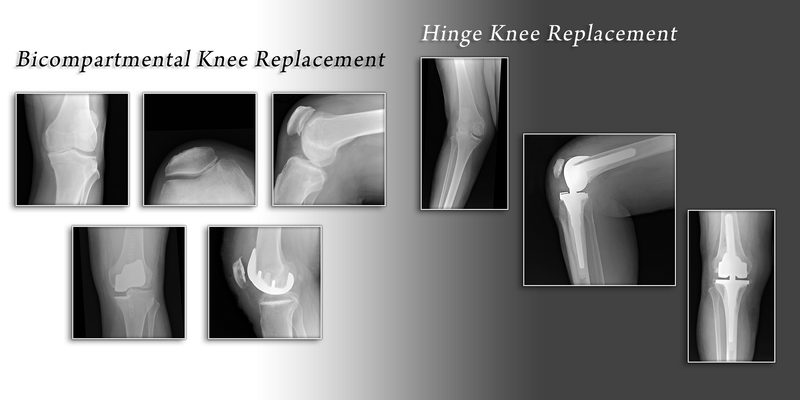Knee Replacement
In a healthy knee, the ends of your thigh and shin bones are covered with hard cartilage which allows the bones to move easily against each other. Arthritis damages the hard cartilage so that it becomes thin. In places the cartilage may wear away so that your bones rub against each other and become worn.
In a knee replacement operation, the worn ends of the bones and any remaining hard cartilage are removed and replaced with metal and plastic parts. The plastic acts like hard cartilage, helping your joint to move freely. The interlocking parts of the artificial joint allow your knee to bend while also making it more stable.

The aim of total knee replacement, as pictured above, is to restore the articulation of the knee joint and the overall alignment of the limb.
The knee can be divided into three compartments: Patellofemoral, the compartment on the front of the knee which contains the knee cap, medial compartment, the compartment on the inside of the knee, and lateral compartment which is the area on the outside of the knee joint.
Bicompartmental knee replacement is a less invasive surgical alternative to Total Knee Replacement surgery for patients who have only 2 of the 3 compartments of the knee damaged by arthritis.

Hinge knee replacement
This procedure can be used when there is significant damage to the knee joint or in situations where the initial knee replacement needs to be revised (re-done).

